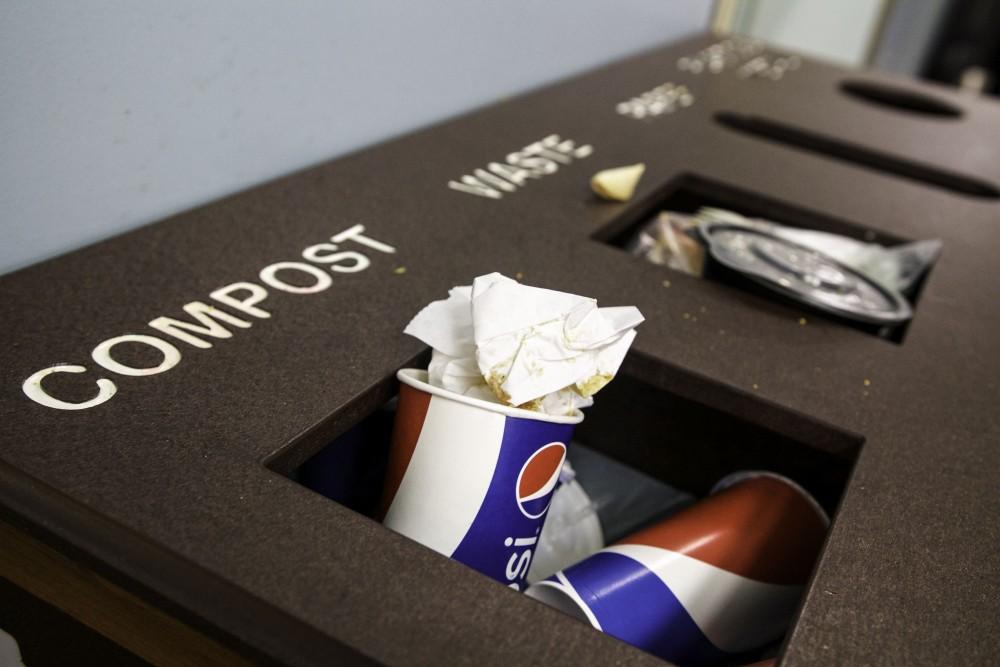Preventing wasted food on campus

GVL / Sara Carte Grand Valley students throw away trash and food at Crave in Kirkhof on Oct. 2.
Oct 15, 2015
When striving to become greener at Grand Valley State University, campus dining has an imperative goal: to eliminate the most waste possible.
James Phillips, sustainability manager at campus dining and Engrained, said campus dining is adamant at monitoring three types of waste before the food reaches the public. These categories include: production waste, service waste and storage waste.
However, some production waste is inevitable, Phillips said. This includes product trim, as well as peels and cores, which are monitored to ensure the produce is used efficiently in promoting campus sustainability.
Service waste, he said, includes spills and leftover portions unable to be served. This type is limited by producing strict amounts to be fully consumed.
“We have an extensive production process that helps indicate production levels,” Phillips said. “Through monitoring these types of waste, we know that we are only throwing away what is necessary.”
After a product is damaged in storage or expires, campus dining remains a three-star Green Restaurant by returning the storage waste directly to the distributor. In addition, it continually measures and records waste in each location before throwing it out, he said.
“Campus dining does not typically have large amounts of this kind of waste,” Phillips said, “We are careful to plan menus. Also, we only purchase the exact amount that is needed.”
When sorting waste, any compostable waste within campus dining kitchens is sorted to the appropriate bin. Campus dining offers compost and recycling bins at all dining locations to make it easy to eliminate landfill waste.
However, Phillips said the compost bins contain large proportions of landfill waste hindering the ability to compost the entire bin. Items unable to be composted or recycled include: Chips bags, tin-foil, non-recyclable plastics, food service gloves, styrofoam and rubber.
“Campus dining does not track compostable waste at Grand Valley,” he said. “But we do audit the waste bins throughout the year so that we have a good idea of how well the campus community is sorting.
“Nearly all disposable items have been converted to compostable options to eliminate, or greatly decrease the amount of landfill waste the university generates.”
Phillips said campus dining is currently working to educate the campus community to properly sort compost and landfill items. For February 2016, GVSU will focus its green efforts on remaining first in Michigan and 24th in the nation for the grand champion category in Recyclemania from the previous year.
In addition, he said campus dining’s partnership between Engrained and the Sustainable Agriculture Project (SAP) enables Engrained to use produce from the campus farm, which continues sustainability.
“Campus dining is currently working to educate the campus community to properly sort compost and landfill items,” Phillips said. “In the future, we are furthering our partnership with the SAP on campus so that we can hopefully provide more produce that was grown right here on campus.”
Deb Rambadt, campus dining marketing director, said campus dining recognizes its significant impact on the university’s overall footprint. She said it works hard behind the scenes to reduce the departmental footprint and provides many forward facing opportunities for guests to participate.
“Campus dining will continue to partner with other departments to support the university’s sustainability goals,” Rambadt said. “We will continually search for new methods that will heighten overall sustainability results.”
For more information on campus dining’s sustainability visit, www.gvsu.edu/campusdine.

























